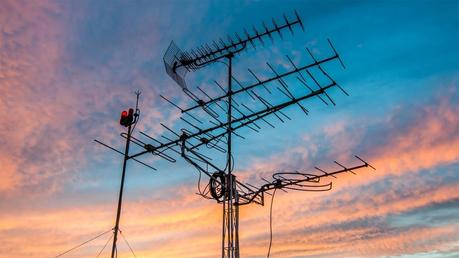
When settling down to watch your favourite television programme, few things are as frustrating as experiencing poor reception or signal loss. Many factors contribute to the quality of the signal received through your TV aerial, and one of the most significant is the weather. In this article, we explore how various weather conditions can impact your TV aerial performance and how you can mitigate these effects.
The Impact of Rain on Signal Reception
Water and Signal Interference
Heavy rainfall can severely affect the signal transmission between the broadcast station and your TV aerial. Water droplets can absorb and scatter the signal, leading to a phenomenon known as rain fade. This issue is particularly prevalent with satellite TV but can also impact terrestrial broadcasts.
Preventive Measures
Ensuring that your TV aerial is properly maintained and waterproofed can help reduce the impact of rain on your reception. Regular checks for any damage or wear and tear,
Content Writer
especially after heavy storms, are crucial. It's advisable to hire a professional aerial installer who can adequately seal all connections and replace any worn-out cables that might be susceptible to water damage.
The Effect of Wind on Aerial Stability
Physical Displacements
Strong winds can physically alter the position or orientation of your TV aerial, leading to a loss of signal. Even small changes in alignment can lead to significant disruption, as aerials are typically finely tuned to capture signals from a specific direction.
Strengthening Your Installation
To mitigate the impact of wind, ensure that your aerial is mounted securely. Brackets and mast should be checked for integrity and tightness. An aerial installer can reinforce the setup if you live in an area prone to high winds, adding extra brackets or using sturdier materials for the installation.
Cold Weather Challenges
Impact of Snow and Ice
In winter, snow and ice can accumulate on the aerial, which can weigh it down and potentially shift its direction. Additionally, ice can create a layer over the aerial that disrupts signal transmission.
Adaptive Measures
One solution is to install a weather-resistant cover over the aerial that prevents snow and ice accumulation. Regular inspections during the winter months can help clear off any buildup and reduce the risk of damage due to excessive weight.
How Sun Outages Can Disrupt Signals
Solar Interference
Though less commonly known, solar interference or sun outages occur when the sun aligns directly behind a satellite transmitting signals and overwhelms the receiver with additional noise, disrupting the signal. This phenomenon affects satellite TV reception and can occur during equinoxes in spring and autumn.
Planning for Solar Interference
Awareness of sun outage periods, which typically last only a few minutes, can help you plan your viewing schedule to avoid significant disruptions. Most satellite providers provide outage schedules in advance, allowing you to prepare for potential signal loss.
Atmospheric Pressure and Signal Quality
Variations in Signal Propagation
High atmospheric pressure can enhance the propagation of TV signals, potentially improving reception quality. Conversely, low pressure often experienced during stormy weather can weaken signal strength.
Monitoring Weather Forecasts
By staying informed with accurate weather forecasts, you can anticipate changes in atmospheric conditions that might affect your TV reception. Understanding these patterns can also aid in scheduling maintenance checks at optimal times.
The Need for Professional Aerial Installation
Importance of Expertise
The correct installation and maintenance of your TV aerial are paramount for minimal disruption, regardless of adverse weather conditions. A professional aerial installer not only ensures that the aerial is positioned for the best possible reception but also considers factors like local topography and typical weather disruptions.
Regular Maintenance
A routine check-up by a professional can help detect and rectify any issues that might escalate into bigger problems under severe weather conditions. This proactive approach not only ensures consistent quality in TV signal reception but also prolongs the life of your aerial equipment.
Summary
Weather plays a significant role in the performance of your TV aerial and the quality of reception. From the heavy impact of rain and winds to the subtler effects of atmospheric pressure and solar alignments, each weather condition could potentially disrupt your viewing experience. By understanding these impacts and taking the necessary precautions, such as professional installation and regular maintenance, you can ensure that your television viewing remains clear and uninterrupted, come rain or shine.
In conclusion, while we cannot control the weather, we can certainly prepare our TV aerial installations to handle whatever conditions may arise. This not only enhances our viewing experience but also protects our equipment from potential damage. As the seasons change and different weather challenges present themselves, remember that professional advice and assistance remain your best defence against the elements.
